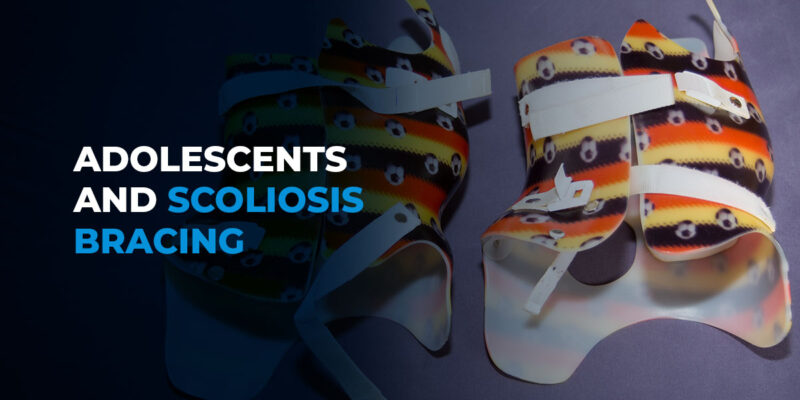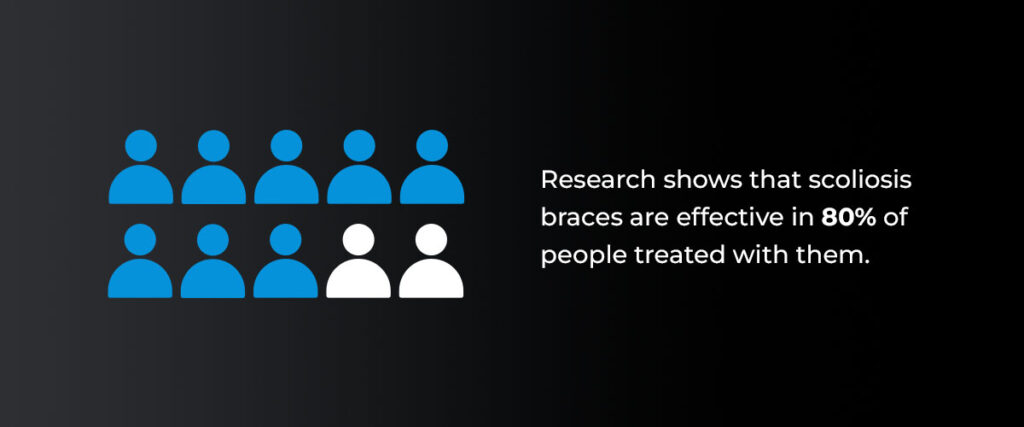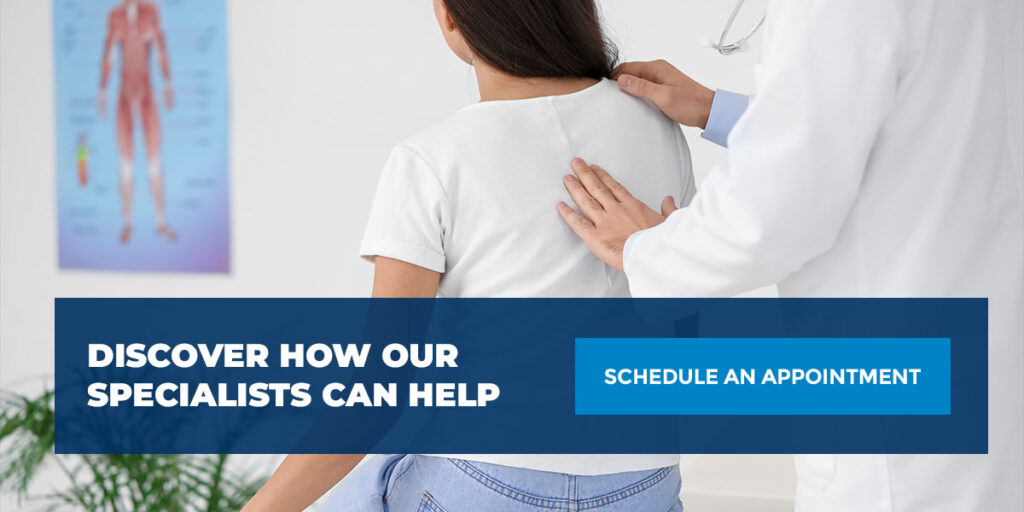

As a child with scoliosis grows, their spine curvature can increase. At this point, many orthopedic surgeons will recommend they wear a back brace until the spine stops growing, typically right before the adolescent growth spurt. This type of scoliosis treatment can prevent the curvature from progressing, preventing the need for surgery.
A scoliosis brace works by placing pressure on the spine in several places to prevent curvature from progressing. The device is worn around the torso, causing your child to maintain a corrective posture. By placing pressure on the outer edge of the curve, a brace can support the spine and hold it in a straight, unrotated position through your teen’s growth spurt.
Your child’s doctor will monitor their growth with each visit, creating an individualized schedule for wearing the brace that considers their unique growth pattern and other needs. They’ll outline the number of hours your child should wear the brace each day based on their stage of growth and the degree of their curve. In general, teens with moderate scoliosis wear their brace between 16 and 23 hours a day — either all day or only at night for three to four years.
You can also have your teen’s scoliosis brace come with a compliance monitor to record the amount of time the brace is worn. The self-monitoring device can help your child manage a schedule to achieve the most benefits from the brace. If the monitor shows they’re not wearing the brace for the right amount of time each day, you can consult with your child’s doctor to find a solution that works best for them.
Note that a child who is skeletally mature or is growing with a curved spine at over 45 degrees or under 25 degrees without documented progression is most likely not a fit for a scoliosis brace due to the harm it could cause them.
While bracing might not be a cure for scoliosis and can’t reverse existing spinal curvature, it comes with several advantages that make it an optimal, effective treatment option. When worn properly and for the recommended hours each day, a back brace for teens can provide many benefits.

If left untreated, scoliosis can impact height and cause abnormal posture, with severe cases affecting heart and lung function. Being proactive about scoliosis treatment can prevent further spinal problems and protect your child’s health. Research shows that scoliosis braces are effective in 80% of people treated with them.
It’s important to know that a scoliosis brace will only work when used as prescribed. Ensure your child wears their brace properly for the recommended hours each day for optimal results.
If your teen wears their brace according to their treatment plan, they’re less likely to need surgery. One study found that the nighttime orthosis back brace specifically is the most effective way to avoid surgery and prevent curve progression compared to other types of braces.
Unlike surgery, which can lead to a long recovery time, bracing only involves wearing a device for a set period. Your child can comfortably wear the brace under clothing, and since it’s not visible, it won’t considerably impact daily life. The versatility and convenience of scoliosis braces make them an ideal choice for those who wish to avoid surgery.
Scoliosis can cause visible changes in the spine, which can impact body image and self-esteem. A scoliosis brace can improve body image by reducing the curvature of the spine, making changes less noticeable. For teens who might be self-conscious about their appearance, bracing can boost confidence in the long term.
Scoliosis can cause back pain and discomfort, which can impact your teen’s daily activities. Bracing can help alleviate pain by applying pressure on the spine to reduce strain on back muscles. In some cases, your child might also benefit from bracing coupled with physical therapy. A health care provider can create an exercise plan specifically designed for scoliosis, helping your teen improve mobility and overall quality of life.
There are various types of scoliosis braces, from full-time braces to nighttime options. The most common brace is a thoracic lumbar sacral orthosis (TSLO), which provides support in the upper back, buttocks, thoracic region or sacrum. Commonly prescribed TLSOs include the Wilmington and Boston brace.
The best type for your child will depend on their degree of curvature and other factors. Some scoliosis brace options for your teenager include:

Scoliosis can impact your teen’s daily life, causing pain and discomfort. As they grow, a back brace can be the most effective option to slow the progression of scoliosis and improve their quality of life.
At New York Spine Institute, our specialists offer premier scoliosis care and surgeries for those with scoliosis. We specialize in treating severe cases of scoliosis, spinal deformities and other degenerative spinal conditions.
We offer cutting-edge surgical care for patients and constantly conduct research to improve our treatments and patient outcomes. Adolescents with mild cases of scoliosis can often benefit from observation, bracing to slow the progression of curvature and physical therapy to help them maintain their daily activities.
Discover how NYSI can help your teen with scoliosis. Contact us for an expert consultation today.
Links: